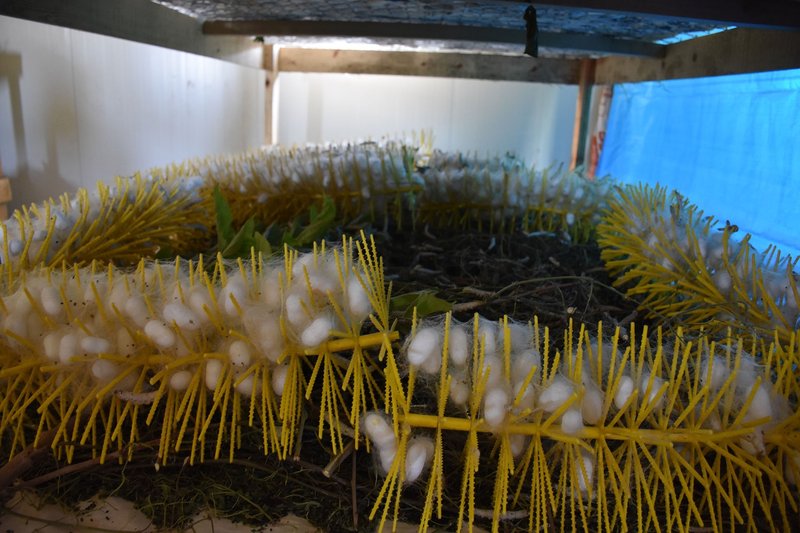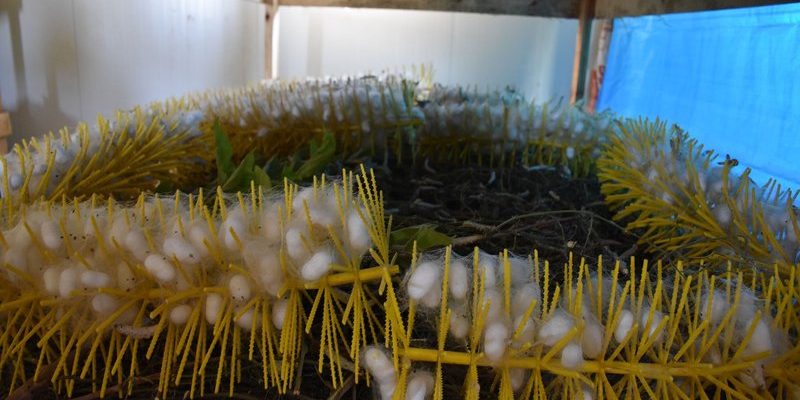
So, where do you begin? First, let’s talk about the silkworm itself. The most commonly raised silkworm is the *Bombyx mori*. These little guys are the larvae of a moth that thrives on a diet of mulberry leaves. They’re fascinating creatures, and raising them can be an enjoyable hobby, whether you’re looking to create silk threads, feed them to your pets, or just observe their life cycle. Here’s everything you need to know to get started on your backyard mini silkworm farm.
Why Raise Silkworms?
You might be wondering, “Why should I even consider raising silkworms?” There are several compelling reasons:
- Educational Experience: Silkworms offer a fantastic opportunity for hands-on learning. You can observe their life cycle, from egg to caterpillar to pupa to moth.
- Eco-Friendly Hobby: Silkworms are less resource-intensive compared to other livestock. They require minimal space and have a small environmental footprint.
- Potential Income: If you find yourself in a crafty mood, you could even sell the silk you produce or use it in your own DIY projects.
- Pest Control: Raising silkworms can attract beneficial insects that help keep harmful pests away from your garden.
Honestly, starting your own mini silkworm farm can be rewarding in many ways, not only for you but also for the environment!
Setting Up Your Silkworm Farm
Alright, let’s get down to business. You need a few simple supplies to set up your mini farm. Here’s what you’ll need:
- A Container: This could be a simple plastic bin or a glass aquarium. Just ensure it’s well-ventilated.
- Mulberry Leaves: Fresh mulberry leaves are a must! Make sure you have a constant supply, as it’s the primary food source for silkworms.
- Temperature Control: Silkworms thrive in warm conditions, ideally around 70-80°F (21-27°C). A heat lamp or a heating pad can help if you live in a cooler climate.
You might be thinking, “That doesn’t sound so hard!” And it isn’t. Once you have these basics, you can focus on creating an environment where your silkworms can flourish.
Choosing the Right Silkworm Eggs
When it comes to starting your silkworm farm, selecting the right eggs is crucial. You can often find silkworm eggs online or at specialty insect shops. Look for reputable sources to ensure you’re getting healthy eggs.
You might want to consider these factors:
- Quantity: Start small! A dozen eggs is a great number for beginners. You can expand as you learn!
- Quality: Ensure the eggs are from a healthy breeding stock. Read reviews or ask for recommendations from fellow hobbyists.
- Freshness: Always check the date to ensure the eggs are viable. Fresh eggs typically yield better results.
Let me explain: the success of your mini silkworm farm largely depends on the quality of the eggs you choose. Healthy, fresh eggs will hatch into strong silkworms, setting the stage for your farming adventure.
Caring for Your Silkworms
Once your eggs hatch, you’ll find yourself with tiny, hungry caterpillars! Here’s how to care for them properly:
– **Feeding**: Silkworms eat a lot! Make sure you provide fresh mulberry leaves every day. You can also experiment with *osage orange* or *white mulberry* leaves if mulberry isn’t available.
– **Cleaning**: Keep the container clean by removing leftover food and waste regularly. This prevents mold and bacterial growth, which can harm your silkworms.
– **Monitoring**: Keep an eye on the temperature and humidity. Silkworms prefer humid conditions, around 60-70%. Spritzing some water on their enclosure can help maintain this.
You might be surprised at how quickly they grow! They can shed their skin multiple times within a few weeks, and with each molt, they become larger and hungrier.
Harvesting Silk
After about 5-6 weeks, your silkworms will start to spin cocoons. Here’s where the magic happens! They’ll weave a silky cocoon around themselves, turning into pupae.
Here’s what to do next:
1. **Wait**: Allow them to spin their cocoons for about 3-4 days. The longer you wait, the thicker the silk.
2. **Boil the Cocoons**: To obtain silk, you must kill the pupa inside. This is often done by boiling the cocoons in water (roughly 160°F or 71°C).
3. **Unravel**: Once boiled, you can carefully unravel the silk threads from the cocoon. This part requires patience and a gentle touch.
It’s like unlocking a treasure! With practice, you can produce several yards of silk.
Common Challenges
As with any hobby, raising silkworms comes with its own set of challenges. Here are a few you might face:
– **Diseases**: Silkworms can be susceptible to diseases, especially if their environment is not kept clean. Keeping everything tidy and maintaining a good diet is key to their health.
– **Overfeeding**: Silkworms can eat a lot, but don’t overdo it. Too much food can lead to mold growth, which can harm them.
– **Temperature Fluctuations**: If it gets too cold or too hot, it can stress the silkworms. Make sure you monitor their environment consistently.
Here’s the thing: while it might feel daunting initially, most of these challenges can be tackled with a bit of care and attention.
Exploring Alternatives to Silkworm Farming
You might be curious—are there any alternatives to raising silkworms? If you love gardening or enjoy working with different kinds of insects, here are a few options:
- Mealworms: They’re easy to raise and can also be a great food source for pets.
- Butterflies: Raising caterpillars to become butterflies can be a visually stunning and rewarding experience.
- Bees: If you’re up for a bigger commitment, beekeeping is another fascinating and beneficial hobby.
Each of these alternatives has its own unique benefits, so consider what excites you the most before diving into a new project.
Final Thoughts
Building a mini silkworm farm in your backyard can be an exciting journey filled with learning and discovery. With just a few supplies, a little patience, and some love for nature, you can watch a small egg turn into a beautiful silky cocoon. Whether you’re interested in the science of silk production or simply looking for a unique hobby, raising silkworms can be a rewarding experience.
So, why not give it a shot? You might be surprised by how much joy these tiny creatures can bring to your life. Happy farming!

